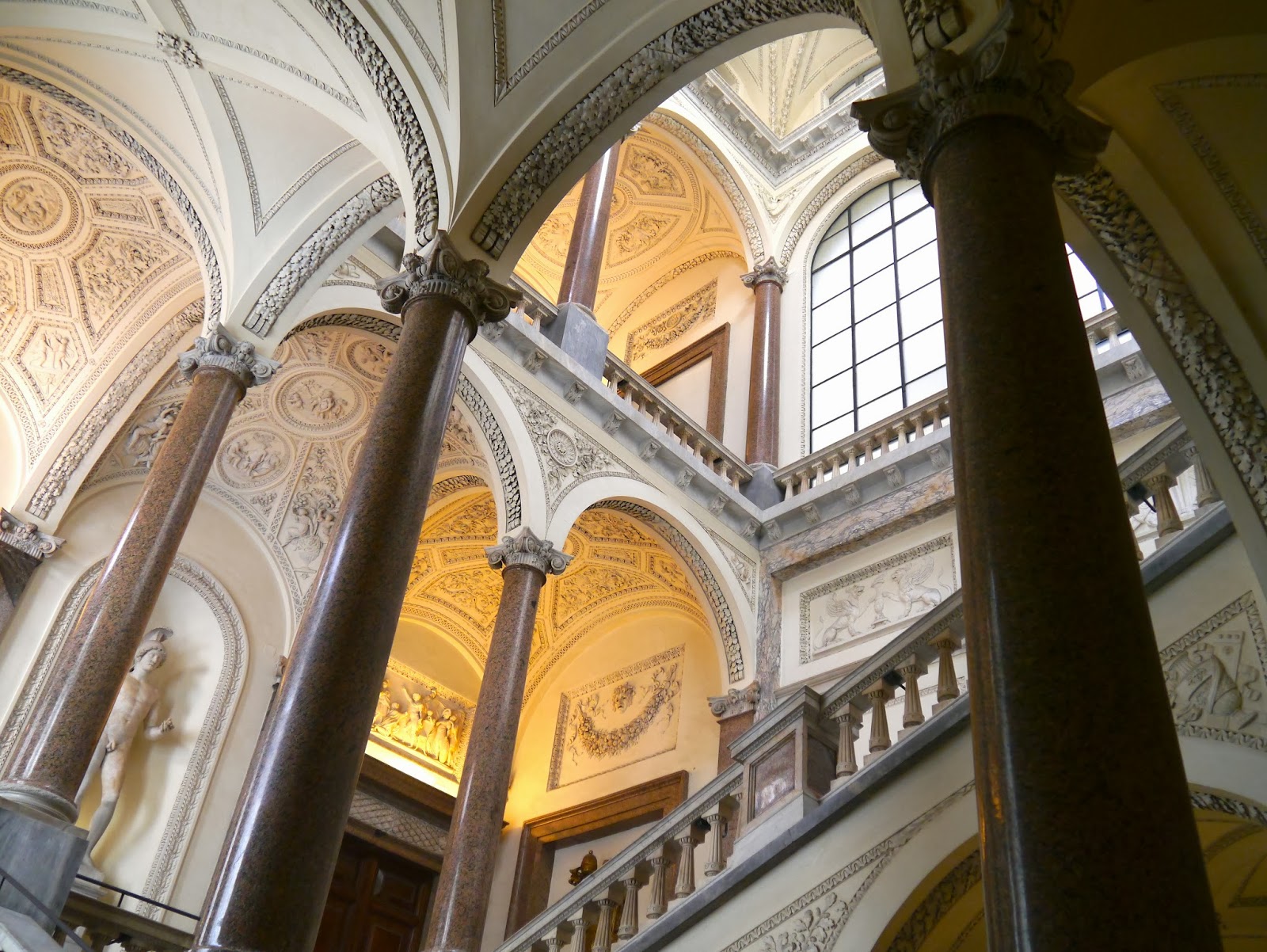 |
| This lovely lady is in the Barracco Museum. |
Seen the Villa Borghese, St Peter’s, the Vatican Museum and the Capitoline? Overwhelmed by the crowds in Rome? There’s undoubtedly much you haven’t seen - check out all the possibilities on the
Museo di Roma website. I haven’t covered anywhere near all of these. But I can give a couple of suggestions for some less crowded museums that are very rewarding...
Barracco Museum
 |
On the wall behind, a view of Barone Barracco's
original private museum. |
In a palazzo near Largo Argentina, this is a private collection amassed in the days when 19th century gentlemen with money to spare could go to the sale rooms and choose bits and pieces of Egyptian or Etruscan art to take home. Barone Barracco left it all to the Commune di Roma, and here it is for you to visit: ancient Egyptian pieces, Sumarian writing, Greek marble, Etruscan carvings - any single one of which could, alone, be the centrepiece of a whole museum in any other city.
On the day I visited in the high tourist season I was the only one there, apart from couple of bored docents. I just walked from room to room - it’s not a large museum - trying to stop my jaw from dropping too much....
From the website:
“Barone Giovanni Barracco donated his personal collection to the city of Rome in 1902 together with the building which housed it at that time, which was built by the Architect Koch on Corso Vittorio Emanuele and demolished in 1938 when this area was redeveloped. In 1948 the collection was rehoused in its present building, "The Piccola Farnesina" or "Farnesina dei Baullari", attributed to Antonio da Sangallo the Younger.
The original building, which has bossed stonework on the ground and upper floor, was given a new facade on Corso Vittorio Emanuele between 1898 and 1901 by Enrico Gui.”
 |
| Small but exquisite: Barracco Museum. |
 |
| Ancient Egyptian head: Barracco Museum, Rome. |
Museo di Roma
 |
| Antonio Canova, self portrait, 1811-1812 |
This is the city’s official museum for things that aren’t ancient, Papal, or really, really, famous. It's just off Piazza Navona, which you can see from its windows. A stroll through its galleries fills in all those other years - the Popes after the Renaissance; the ‘modern’ Roman Senate; the 18th century ‘Grand Tourists’; what happened when Napoleon arrived; (good) plaster copies of antiquities made for the 18th and 19th century tourist trade; 19th century art showing views of Rome as it looked then. An hour well spent, in the lovely Palazzo Braschi, with a very grand staircase.
Again, I was the only visitor. Here's the
website.
 |
| Ippolito Caffi 'Interior of the Colosseum' 1857 |
 |
| Willelm van Nieulandt 'View of Piazza del Popolo' Early 17th century. |
 |
| Giovanni Paolo Panini - an ink drawing from 1749. |
 |
| Factory of Giovani Volpato c.1786 |
 |
| The staircase of Palazzo Braschi. |










No comments:
Post a Comment